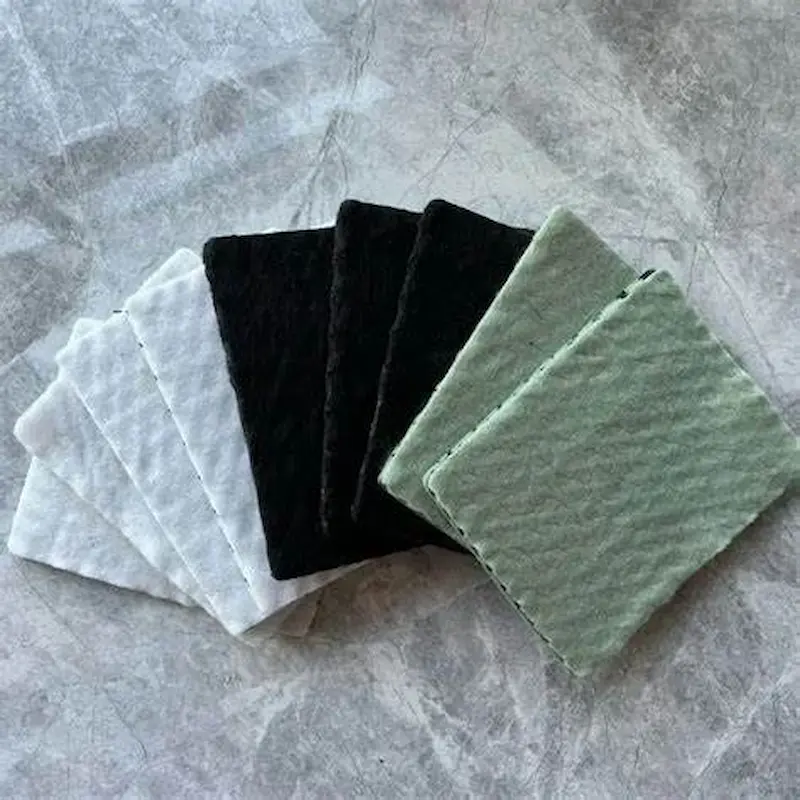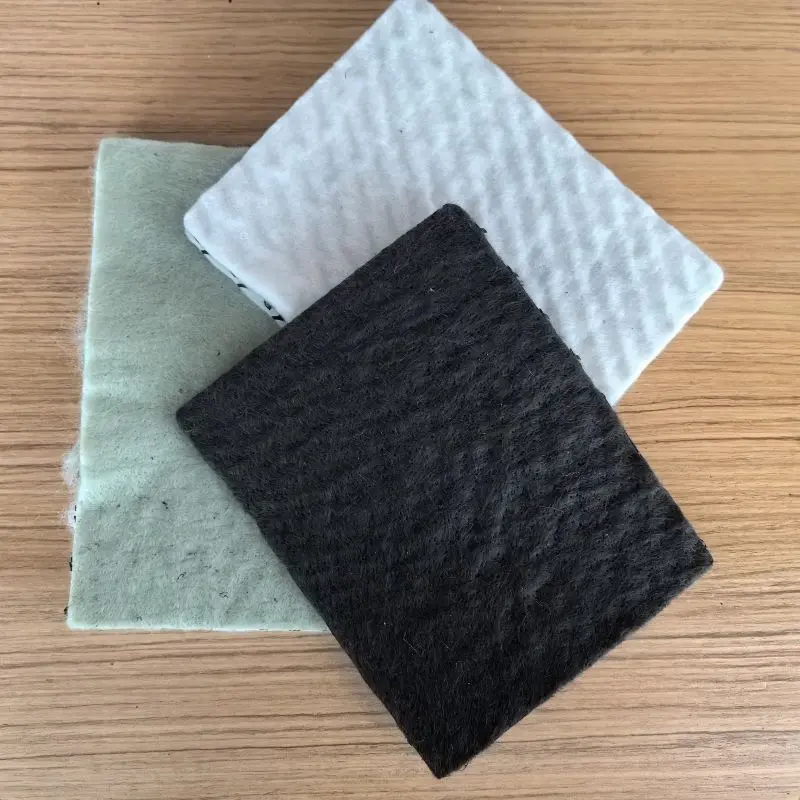What is a 3D Drainage Net?
A 3d drainage net is a geosynthetic material designed to facilitate drainage and water management in construction and civil engineering projects. It is typically made of synthetic polymers such as polypropylene or polyethylene, woven into a three-dimensional matrix. This net structure promotes better water flow by creating an effective channel for water to pass through. It also prevents soil erosion, reinforces the ground, and supports other drainage components like pipes or tunnels.

Key Features of 3D Drainage Nets
Three-dimensional structure | The unique 3D matrix allows for better water distribution and flow.
|
High tensile strength | It can withstand high-pressure environments. |
Durability | Resistant to chemicals, UV rays, and environmental factors, making it ideal for long-term use.
|
Ease of installation | Quick and cost-effective installation compared to traditional drainage systems.
|
Importance of Effective Drainage Systems in Thailand
Thailand’s weather pattern is characterized by heavy rains, particularly during the monsoon season (May to October). The urban areas, especially Bangkok, experience regular flooding that disrupts daily life and causes significant damage to infrastructure. Flooding not only causes inconvenience but also poses risks to public health and safety.
![]()
Key Drainage Issues in Thailand
1. Poorly designed drainage infrastructure: Many drainage systems in Thailand are outdated or inadequate to handle the increasing volume of water.
2. Urbanization: Rapid urban development leads to increased surface runoff, overwhelming existing drainage systems.
3. Climate change: Altered rainfall patterns and more intense storms exacerbate the existing drainage problems.
4. Soil erosion: Improper water flow management leads to soil erosion, damaging the landscape and undermining infrastructure.
Given these challenges, innovative solutions like 3D drainage nets are essential to building resilient drainage systems.
Benefits of 3D Drainage Nets in Thailand
1. Improved Water Flow and Drainage Efficiency
3D drainage nets offer superior water flow compared to conventional drainage systems. Their unique structure enables water to flow through multiple channels, reducing the risk of blockages and ensuring efficient drainage. In areas prone to flooding, 3D drainage nets ensure that rainwater is quickly diverted away, preventing waterlogging and damage to infrastructure.
2. Erosion Control
The three-dimensional matrix of the net provides mechanical support to the soil, reducing the risk of erosion. This is particularly important in areas where flooding can wash away topsoil and damage roads, buildings, and other structures. By stabilizing the soil, 3D drainage nets ensure that drainage channels remain intact and functional, even in the face of heavy rainfall.
3. Sustainability
3D drainage nets are made from durable, long-lasting materials that can withstand the harsh environmental conditions of Thailand. They are resistant to UV degradation, temperature fluctuations, and chemical exposure. This ensures the longevity of drainage systems and reduces the need for frequent maintenance or replacement.
4. Cost-Effective Solution
Compared to traditional drainage systems, 3D drainage nets are relatively inexpensive to produce and install. Their lightweight nature reduces transportation costs, and their easy installation minimizes labor expenses. Over time, their durability and low maintenance costs offer a cost-effective solution for both urban and rural drainage needs.
5. Environmental Benefits
Because 3D drainage nets improve water flow and prevent erosion, they help maintain the local ecosystem by reducing water pollution and sedimentation in rivers and lakes. Additionally, the use of synthetic materials that can last for decades reduces the need for resource-intensive repairs and replacements.
Applications of 3D Drainage Nets in Thailand
3D drainage nets can be used in various applications across Thailand, from urban drainage systems to agricultural and construction projects. Here are some key applications:
1. Urban Drainage Systems
In cities like Bangkok, where urban flooding is a common problem, 3D drainage nets can be integrated into stormwater management systems. The nets can be installed in drainage ditches, culverts, and other stormwater channels to improve water flow and prevent the clogging of conventional drainage pipes.
2. Road Construction
Thailand’s road network is often affected by erosion due to heavy rainfall. 3D drainage nets can be used in road construction to stabilize slopes, prevent waterlogging on the road surface, and reduce maintenance costs by controlling water flow around roadways.
3. Slope Protection and Erosion Control
In rural and mountainous regions of Thailand, landslides and soil erosion are significant threats during the rainy season. Installing 3D drainage nets on slopes helps maintain the integrity of the soil and prevents landslides, protecting both people and infrastructure.
4. Agricultural Drainage
In agricultural areas, the net can be used for drainage in fields, especially in regions prone to waterlogging. By improving water management and preventing soil erosion, the 3D drainage net ensures better crop yields and enhances soil fertility.
Data and Statistics: Effectiveness of 3D Drainage Nets
To illustrate the effectiveness of 3D drainage nets, let’s look at some real-world data from case studies conducted in Thailand.
Table 1: Comparison of Drainage Efficiency Between Conventional and 3D Drainage Systems
Parameter | Conventional System | 3D Drainage Net System |
Water Flow Rate (L/s) | 15 | 45 |
Erosion Reduction (%) | 10 | 70 |
Installation Time (days) | 15 | 5 |
Maintenance Cost (THB/year) | 20,000 | 5,000 |
Service Life(Years) | 10 | 30 |
The data above indicates that the 3D drainage system offers significantly higher water flow rates, reduces erosion more effectively, and has a longer service life. Furthermore, the reduced installation time and maintenance costs make it a more efficient and economical choice for drainage systems in Thailand.
Figure 1: Water Flow Rate Comparison
As shown in the figure, the 3D drainage net system allows for much faster water drainage, which is crucial in flood-prone areas.
Figure 2: Erosion Control Comparison
The bar graph above highlights the significant difference in erosion control, with the 3D drainage net performing much better than conventional systems.

Challenges and Limitations of 3D Drainage Nets
While 3D drainage nets provide numerous benefits, there are also some challenges and limitations to consider:
1. Initial Cost: Although the long-term cost is lower, the initial investment in 3D drainage nets may be higher than traditional systems.
2. Installation Expertise: The installation of 3D drainage nets requires specialized knowledge and expertise to ensure optimal performance.
3. Environmental Impact: The production of synthetic materials used in 3D drainage nets may have some environmental impact, though their long service life reduces this effect over time.
Conclusion
The use of 3D drainage nets in Thailand represents a sustainable and efficient solution to the country’s growing drainage and flood management issues. With their superior drainage capabilities, erosion control, and cost-effectiveness, 3D drainage nets provide significant benefits for urban and rural infrastructure. As Thailand continues to face challenges from urbanization, climate change, and natural disasters, incorporating advanced technologies like 3D drainage nets will be essential in building resilient, long-lasting drainage systems.By investing in modern drainage solutions, Thailand can better manage its water resources, reduce the impact of floods, and ensure the safety and well-being of its citizens.

311.webp)
889.webp)
231.webp)